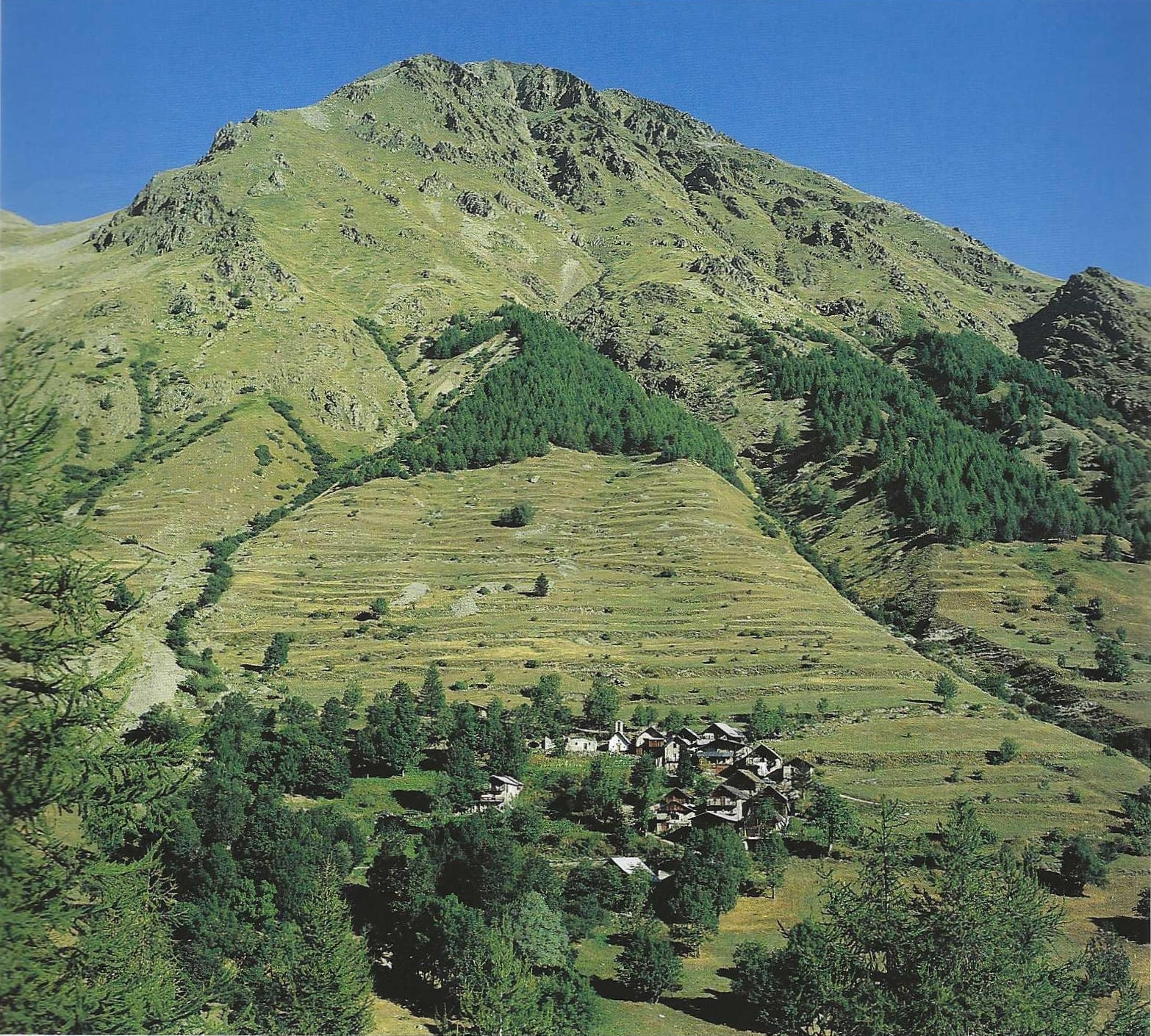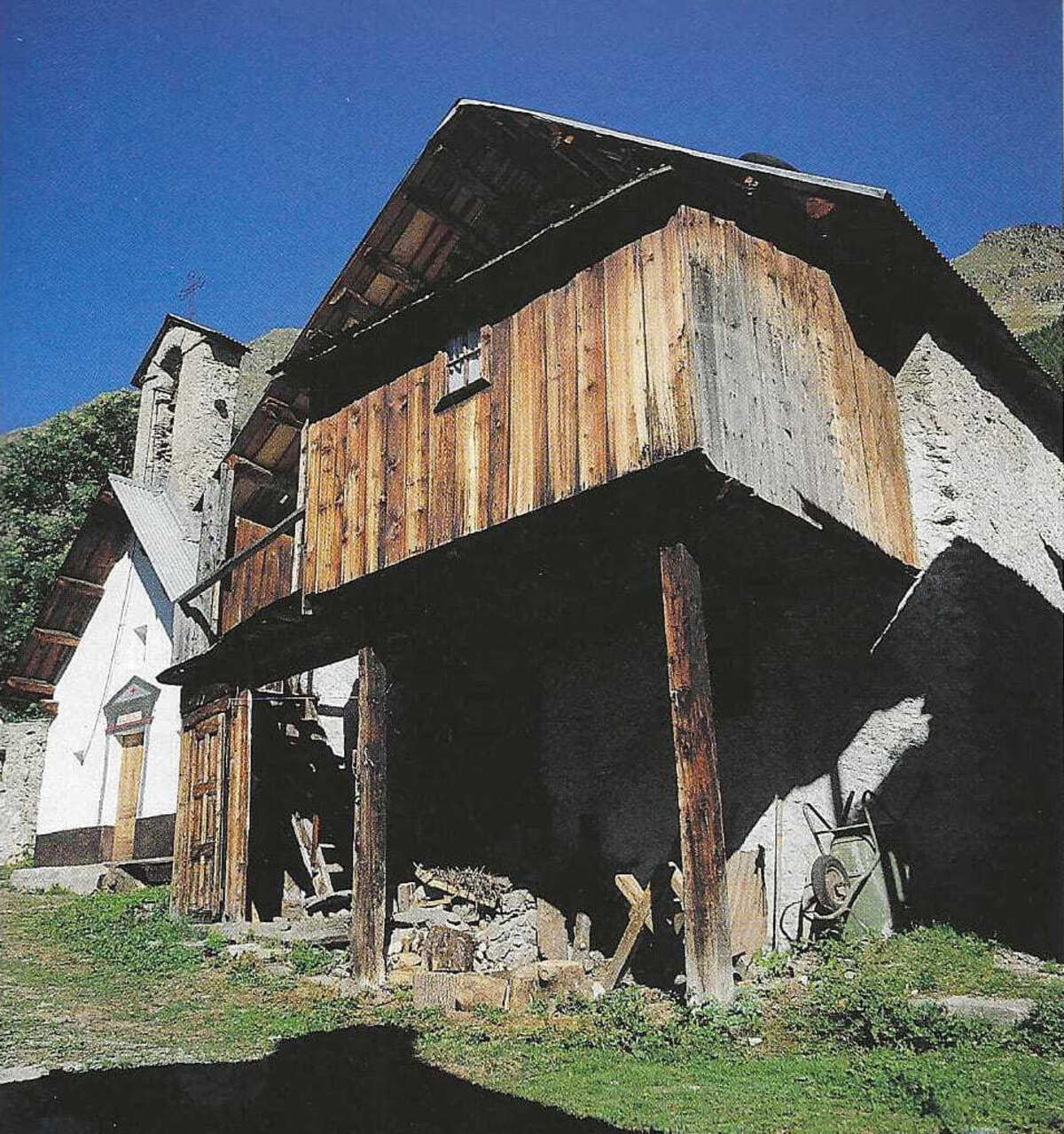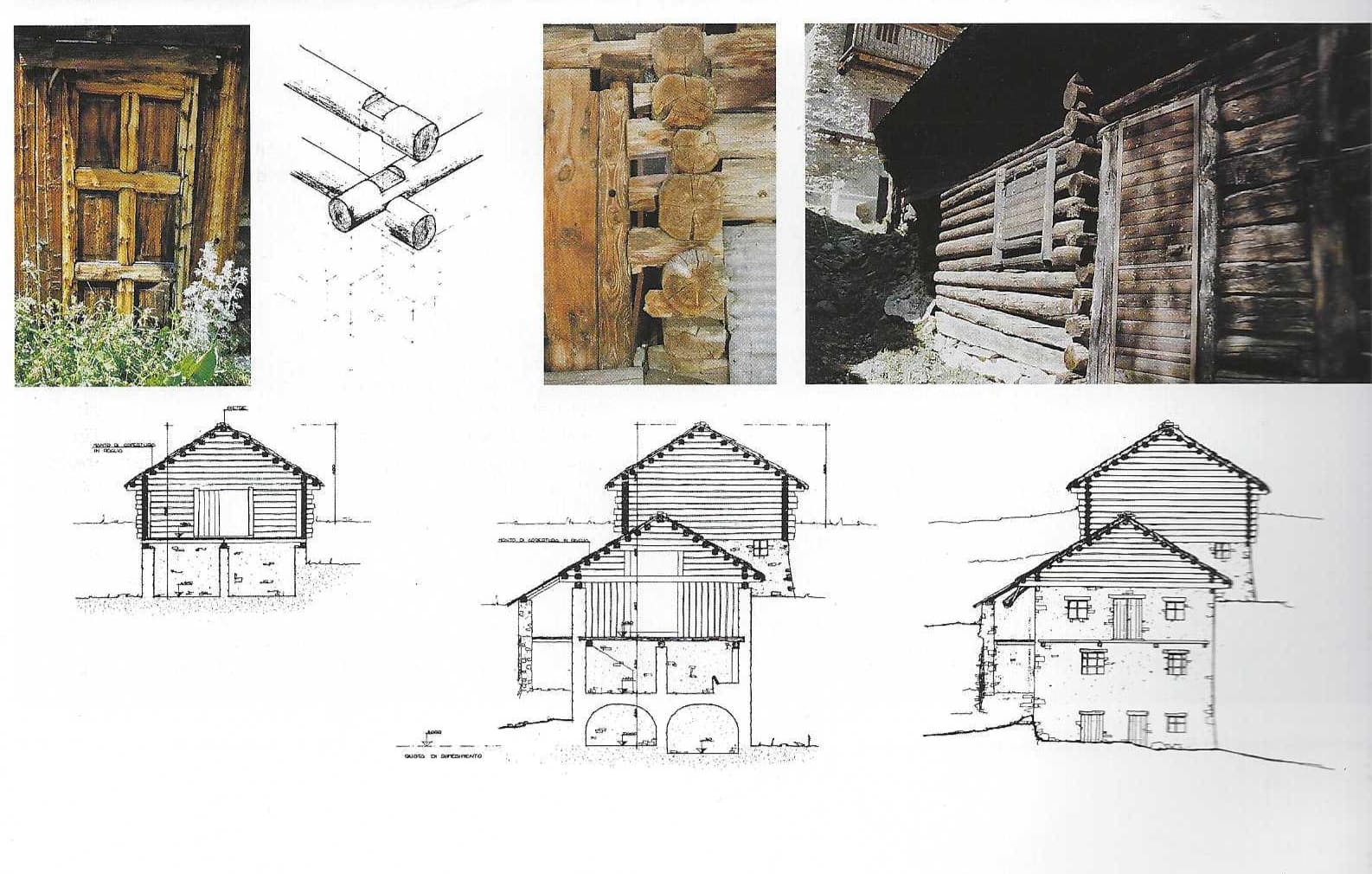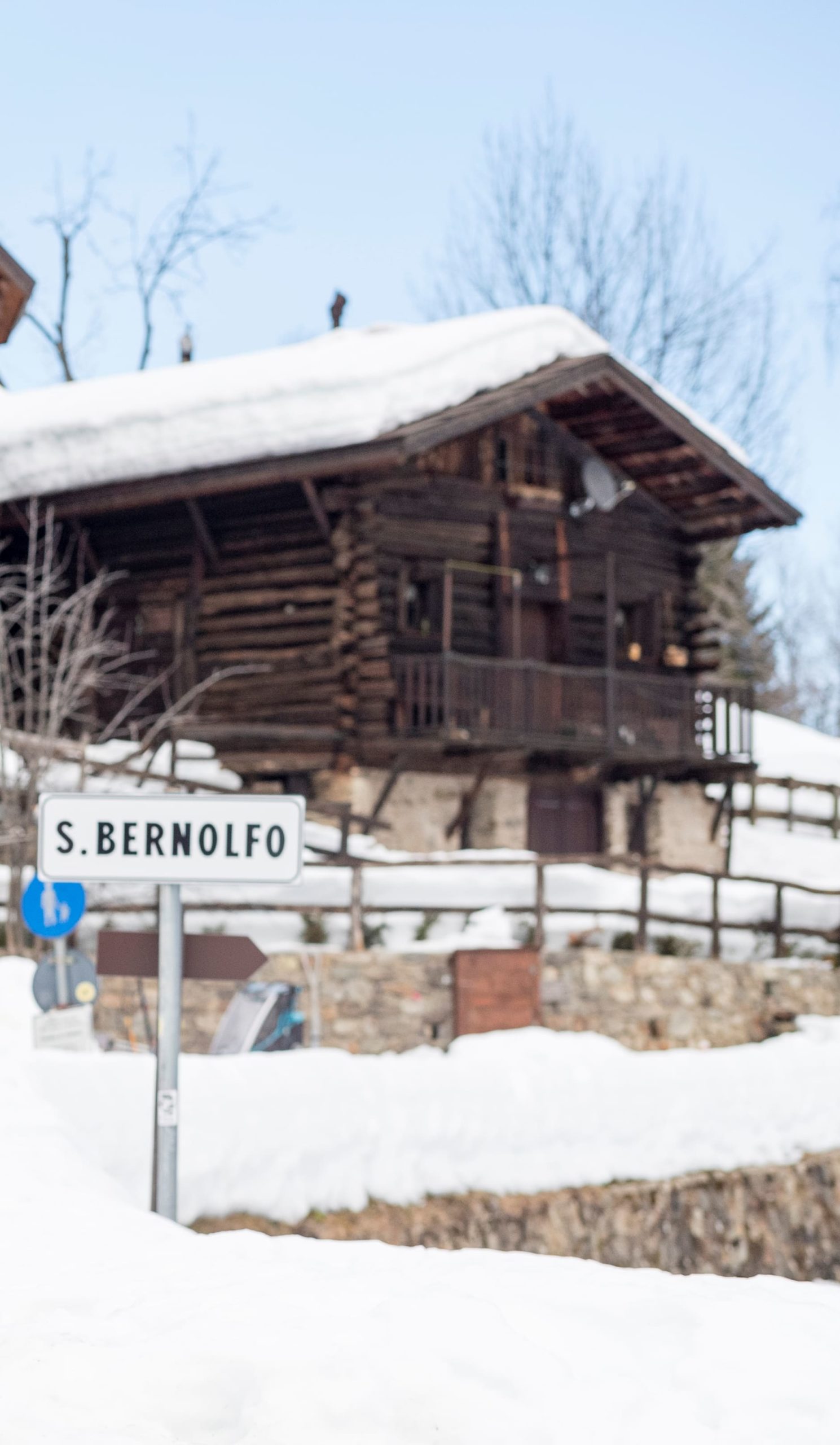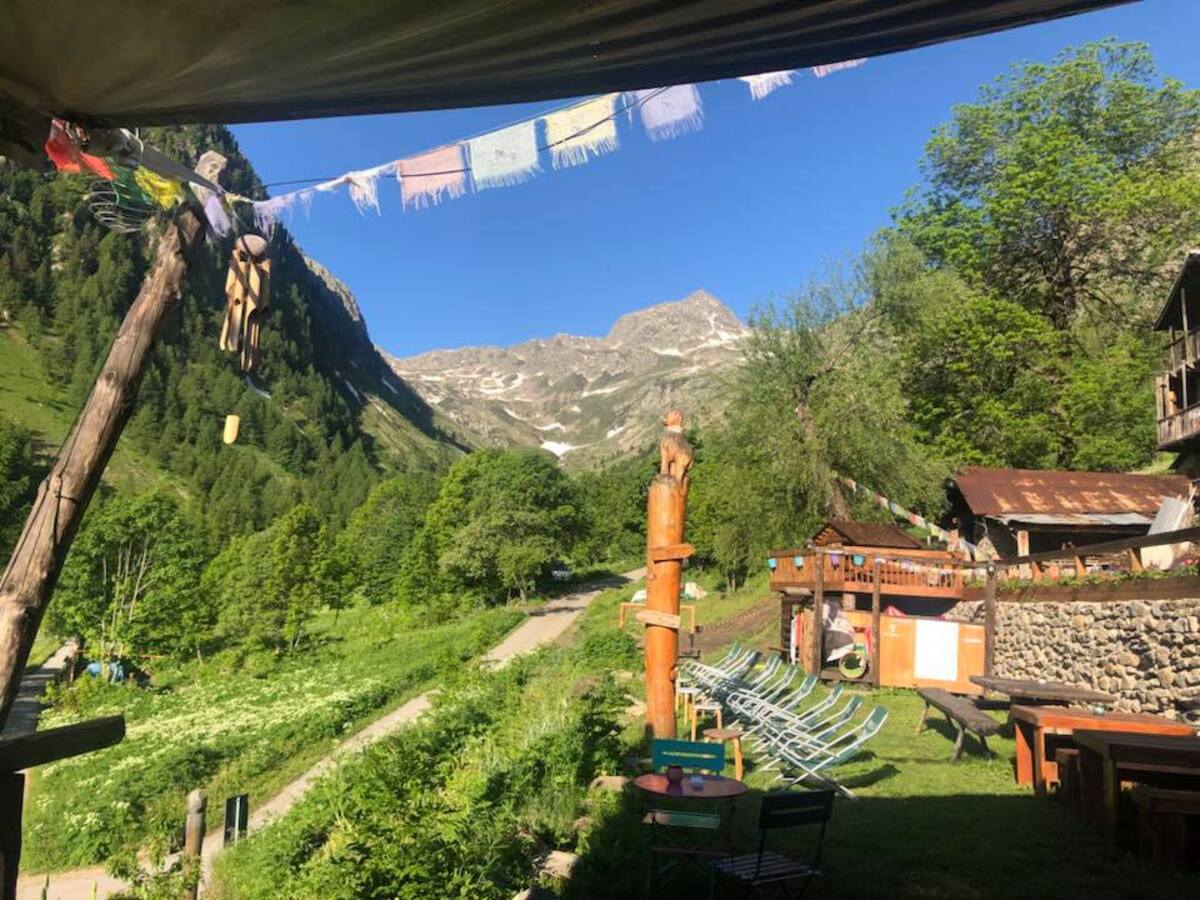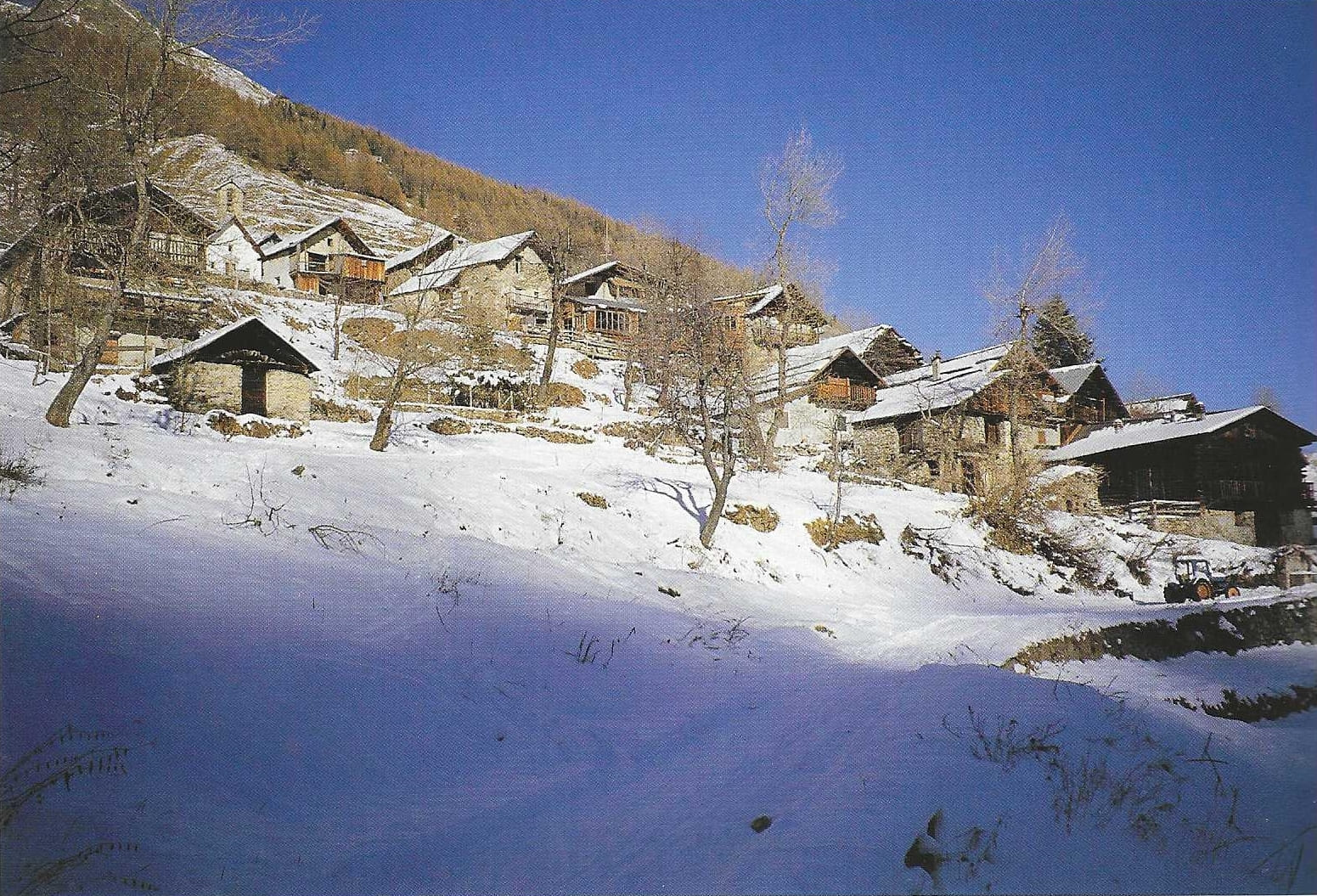San Bernolfo, a fraction of the municipality of Vinadio, rises at 1702 meters in the lateral valley of Bagni di Vinadio.
According to legend, Bernolfo was a bishop of Asti, from which Mondovì, before the establishment of the diocese, depended. He was captured and killed during one of the many Saracen raids in south-western Piedmont during the ninth-tenth century.
The whole village has a typical building technique of the alpine environments with Walser derivation, widespread in the Valleys Sesia, Anzasca and Lys. The houses of San Bernolfo are characterized by a masonry base on which rests a wooden structure, made with the “Blockbau” technique, where the barked logs fit together at the extremes, ensuring solidity and resistance to atmospheric agents. The real derivations of this architectural peculiarity are still unknown.
Some have suggested the establishment of a colonizing community of Nordic origin or Germanic linguistic matrix, as in the case of the Walser in the valleys around the Mount Rosa, which by virtue of its geographical isolation has continued to reiterate the heritage of its construction techniques. But the presence of forms, more or less pure, of “Blockbau” also in Elva and Celle Macra in Val Maira and in more points of the valleys, represents the liveliness in the exchanges and in the human and cultural relations between the two sides of the watershed. The abundant dissemination on French soil – as can be observed in the nearby Tinée Valley or in the more distant Queyras – of this type of construction pièce sur pièce (Blockbau term) suggest a much more complex way of circulation and diffusion than the hypothesis of human allocation isolated from the context.
The settlement of San Bernolfo, after being abandoned by its last permanent inhabitants more than 50 years ago, has begun to live again. Today, the hamlet has become a base for many excursions (near is the Refuge De Alexandris Foches al Laus), trails and ski mountaineering trips. Here stands the restaurant-refuge “Dahu de Sabarnui”, open all year round, and the small chapel of San Lorenzo, already mentioned in the visit of the archbishop in 1770.

